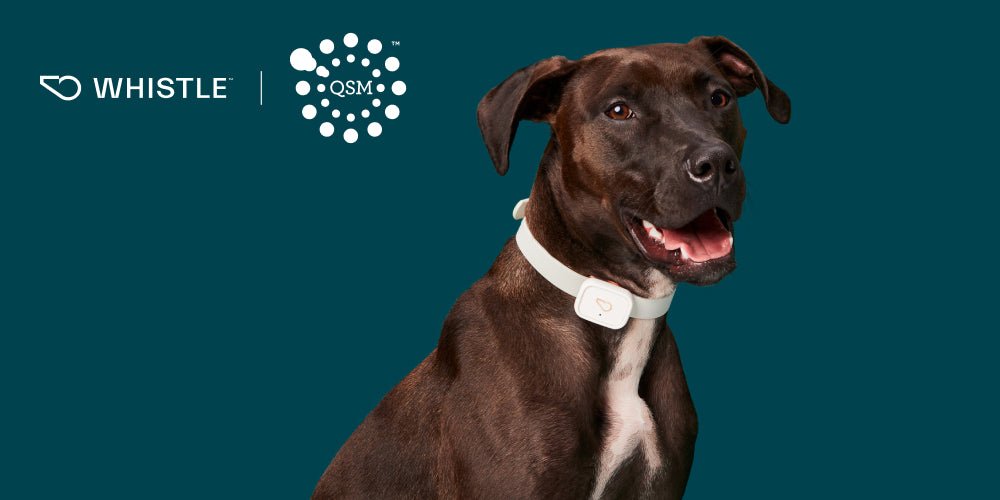Allergies in Dogs: Fall Allergy Symptoms & Treatments

As the leaves change color and the weather grows cooler, many of us eagerly welcome the arrival of fall. However, for our furry companions, autumn can bring about a different set of challenges – allergies. Fall allergies in dogs can be just as troublesome as those experienced by humans. The changing season brings shifting allergens, and if you're a dog owner, it's essential to be aware of the common fall allergens, symptoms, and effective treatment options to keep your four-legged friend comfortable and healthy.
Common Reactions to Fall Allergies
Dogs can manifest their allergies in various ways, and it's essential to recognize the common reactions associated with allergens. Some of the conditions are linked to atopic dermatitis (skin allergies that are a reaction to their environment) and other allergies include:
Ear and Skin Infections:
Allergic reactions can weaken a dog's skin barrier, making it more susceptible to bacterial and yeast infections. These secondary infections can make your dog even more miserable. Ear infections are particularly common, leading to pain and more itching.
Hot Spots (Pyotraumatic Dermatitis):
Hot spots often start with a little itch from any cause, add some extra scratching, licking and they can quickly progress to severely inflamed areas of the skin. These are very painful and require prompt attention to prevent further complications.
Allergic Conjunctivitis:
Signs of allergic conjunctivitis in dogs include excessive tearing and red, irritated eyes. Dogs may rub their eyes or have a persistent discharge.
Allergic Rhinitis:
Dogs can experience sneezing, nasal discharge, and congestion when they inhale allergens like pollen or mold spores.
Fleas:
While fleas can be a year-round problem, depending where you live, they often thrive in the fall due to increased humidity. While fleas are troublesome for all dogs, some dogs who are allergic to the flea saliva can experience intense itching and skin irritations from even a single bite. You may never even see the fleas.
Treatment Options for Fall Allergies
If you suspect that your dog is suffering from fall allergies, it's essential to consult your veterinarian for a proper diagnosis and treatment plan. Here are some treatment options commonly recommended for dogs with fall allergies:
- Apoquel: Apoquel is a prescription medication that specifically targets the itch and inflammation associated with allergies. It works quickly and doesn't cause drowsiness.
- Cytopoint: Cytopoint is an injectable medication that can provide relief from itching and allergic skin reactions for up to 8 weeks. It works by targeting a protein involved in the allergic response.
- Corticosteroids: In severe cases and sometimes in combination with other treatments, corticosteroids may be prescribed to reduce inflammation and alleviate symptoms. These medications have side effects that can be bothersome, including excessive hunger, drinking and urination. They can be highly effective but should be used with caution as severe side effects can occur with prolonged use.
- Immunotherapy: Allergen-specific immunotherapy, commonly known as allergy shots, may be recommended. This treatment involves exposing the dog to small, controlled amounts of the allergen to build up tolerance over time. So as the years go by instead of your dog's allergies getting worse with age, they could improve.
- Topical Treatments: Medicated shampoos, creams, and sprays can help alleviate skin symptoms by removing allergens and providing some topical therapies for prevention or treatment of the secondary infections often associated with allergies. Talk with your veterinarian for their recommendations. There are many products available and some are more effective than others.
- Flea Prevention: If your dog has any allergies, fleas can make a mild itch even worse. It's crucial to implement a robust flea prevention program throughout the year. If your dog is also allergic to fleas consult your veterinarian for recommendations on effective flea control products, you may need special prevention measures because of how sensitive your dog may be to only a single bite.
- Dietary Changes: In some cases, switching to a special diet like Royal Canin Skintopic can help reduce allergic reactions by strengthening the skin's natural defenses against seasonal allergies. Consult your veterinarian for the best options for your dog.
- Omega-3 Fatty Acids: Omega-3 supplements can help improve skin health and reduce inflammation associated with allergies. They are often used as a complementary therapy.
Home Treatment Tips
In addition to veterinary care, there are several steps you can take at home to help manage your dog's fall allergies
Using a Whistle device to monitor new behaviors or changes in behaviors like licking or scratching that happen when the seasons change can help you detect fall allergies in dogs sooner. Itching often starts increasing before we as pet parents can notice. Whistle gives you a head start for treatment as soon as the itching starts increasing, saving your dog from discomfort and the complications that can arise from allergies.
Regular Bathing:
Frequent baths with a mild, hypoallergenic shampoo can help remove allergens from your dog's fur, reducing their reaction to the allergen. If you are giving your pet frequent baths and using a topical flea control, many shampoos can wash off the product leaving your pet unprotected. Oral flea control options are a simple fix for this issue.
Allergen Control:
Keep your home clean by vacuuming regularly and using air purifiers to reduce allergen exposure. Wash your dog's bedding and toys regularly in a hypoallergenic detergent.
Foot Soaks:
After walks or outdoor play, consider rinsing your dog's paws with plain water to remove potential allergens.
Environmental Modifications:
Minimize your dog's exposure to allergens by avoiding walks during high pollen or mold spore counts and keeping windows closed on windy days.
Antihistamines:
While Benadryl is often mentioned and is commonly suggested to provide a little relief for some allergy symptoms in dogs, it has limitations. It primarily targets histamine, one of the chemical messengers involved in allergic reactions. However, allergic responses in dogs involve a complex interplay of various immune system components, and histamine is just one piece of the puzzle. Moreover, Benadryl can have side effects, including drowsiness, which may not be suitable for all dogs, especially if they need to be alert and active.
Fall allergies in dogs can be challenging to manage, but with the right knowledge, veterinary care, and home treatment, you can help your furry friend enjoy the season with minimal discomfort. Be sure to consult your veterinarian for a tailored approach to address your dog's specific allergies and symptoms.
References:
https://www.merckvetmanual.com/dog-owners/skin-disorders-of-dogs/allergies-in-dogs
https://vcahospitals.com/know-your-pet/allergy-general-in-dogs
https://www.tidmorevet.com/the-truth-behind-the-itch-pet-allergy-myths-revealed/
https://www.royalcanin.com/us/dogs/health-and-wellbeing/how-your-dogs-diet-affects-their-skin
https://www.zoetispetcare.com/blog/article/why-antihistamines-fail-control-itch-dog#:~:text=Allergies%20in%20dogs%20are%20different,that%20cause%20inflammation%20and%20itch.














